Related Tags
Interview: Milkman Sound’s Tim Marcus has Californian soul
From humble beginnings in a Haight apartment in 2006, Milkman Sound’s Tim Marcus has handcrafted a range of superb-sounding boutique amps – using his pedal-steel background to inform their design…
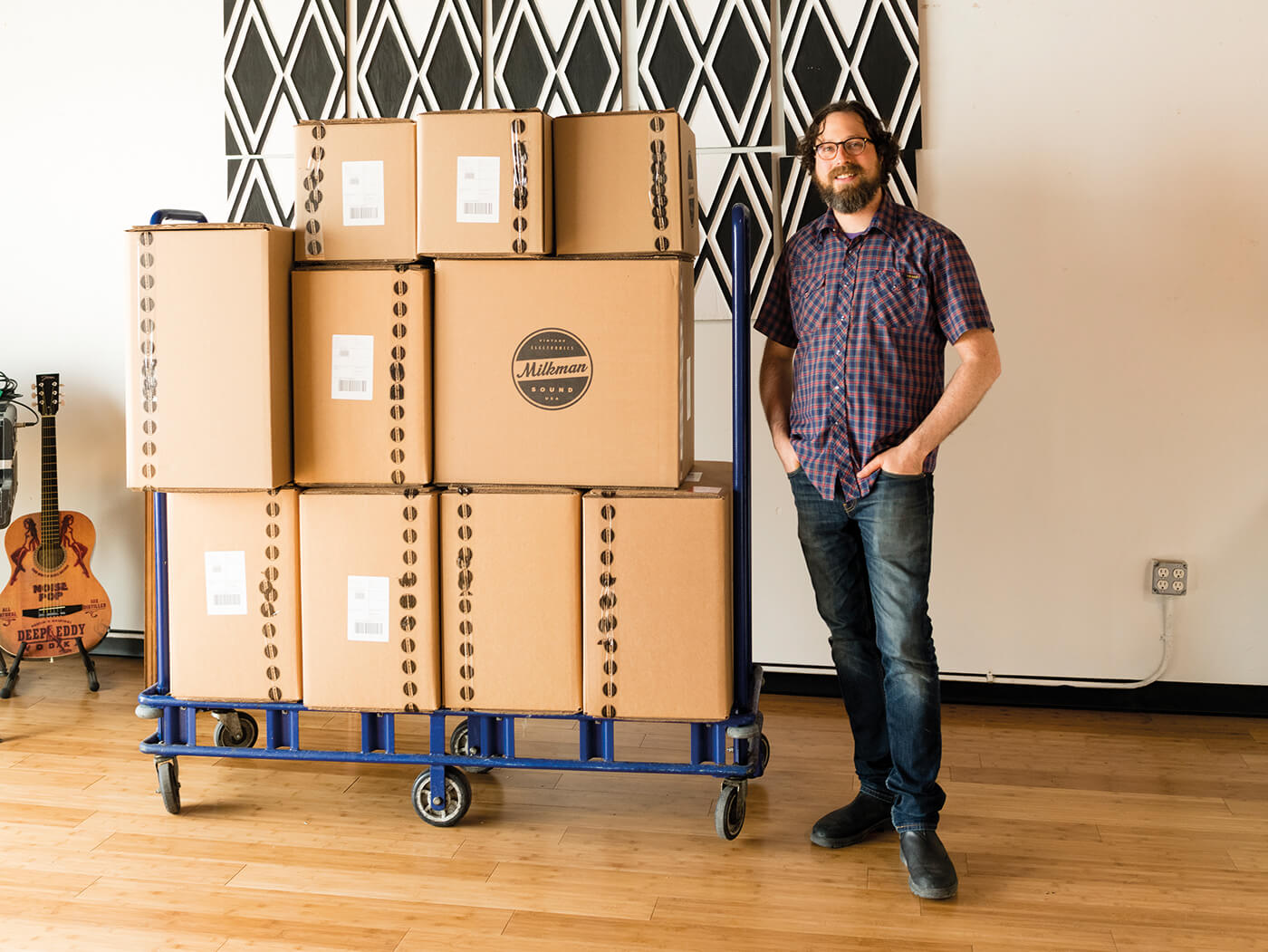
Though very much a one-man band, Tim Marcus rents his shop space in Light Rail Studios, a multi-purpose recording and rehearsal space. All images: David Axelbank
South San Francisco is an area of the famed tourist-rich city that’s rarely touched upon by travel guides. That’s partly because it’s home to the city’s industrial manufacturing base, and partly due to the area’s rundown appearance. Nestling amongst warehouses and commercial buildings are all manner of businesses and suppliers, as well as a sizable homeless population living in broken-down mobile homes and makeshift encampments.
However, like many industrial urban settings, South San Francisco is also historically the home to artists, musicians, recording studios and all kinds of creative companies. Most are drawn by the ample warehouse-style accommodation, as well as the affordability of one of the city’s most inaccessible neighbourhoods. One such company is Milkman Sound.

Proprietor Tim Marcus established his current base in the South San Francisco area in 2016. Since 2006, he’d worked to manufacture his extensive range of boutique amplifiers from his apartment in the Lower Haight. The new space, while tight, is a well-organised and tidy headquarters, which reflects the exacting nature of the construction of Marcus’s amplifiers.
It’s impressive to consider Marcus is a one-man operation; each Milkman amplifier is hand-wired and constructed painstakingly to ensure the highest-quality product, using high-grade components such as Jupiter capacitors and Mercury Magnetics transformers. Amps can be covered in a range of custom-colour Tolex, and in addition to providing a wide range of products, many are born out of a desire to provide something more unique to the player.

Have amp, will travel
Marcus is also an accomplished musician. Performing with Bay Area players – particularly on the pedal-steel – inspired his early amplifier designs. When looking for an ideal platform for the instrument, Marcus initially set out to design amplifiers with high headroom to accommodate the high power output of pedal-steel pickups. Since then, the product range has expanded to include everything from low-power amplifiers such as the One Watt Plus, to the whopping 700W Bass Half And Half. In total, Marcus manufactures 12 distinct amplifier models, with convenient steps in power rating (5, 10, 20, 30, 40, 50, 85, 300 and the aforementioned 700-watt bass head).
Introduced in early 2018, The Amp is the newest addition to the Milkman range – it’s effectively a 50-watt guitar amp based in a box that measures an impressively diminutive 21 x 7 x 16cm (w x h x d) and weighs in at just 1.1kg (2.5lb). Marcus’s inspiration for The Amp came from a desire to build a lower-power version of his 300-watt Half And Half amp in an extremely portable unit.
The Amp is powered by a single 12AX7 tube, which is easily accessed by removing the side panel for changing or swapping out different tubes, and a Class D power amp. Tone control takes the form of a three-knob EQ. Also included are outputs for pedal out, Speakon (speaker out), XLR with cabinet simulation and a speaker-emulating headphone output for silent use.
Finally, The Amp runs on variable AC (100 to 260) for use anywhere in the world. One of the most distinctive features of The Amp is the Robert Keeley-designed digital reverb, which can be switched via an internal DIP switch between spring or plate, as well a trim pot to alter the decay rate of the reverb.
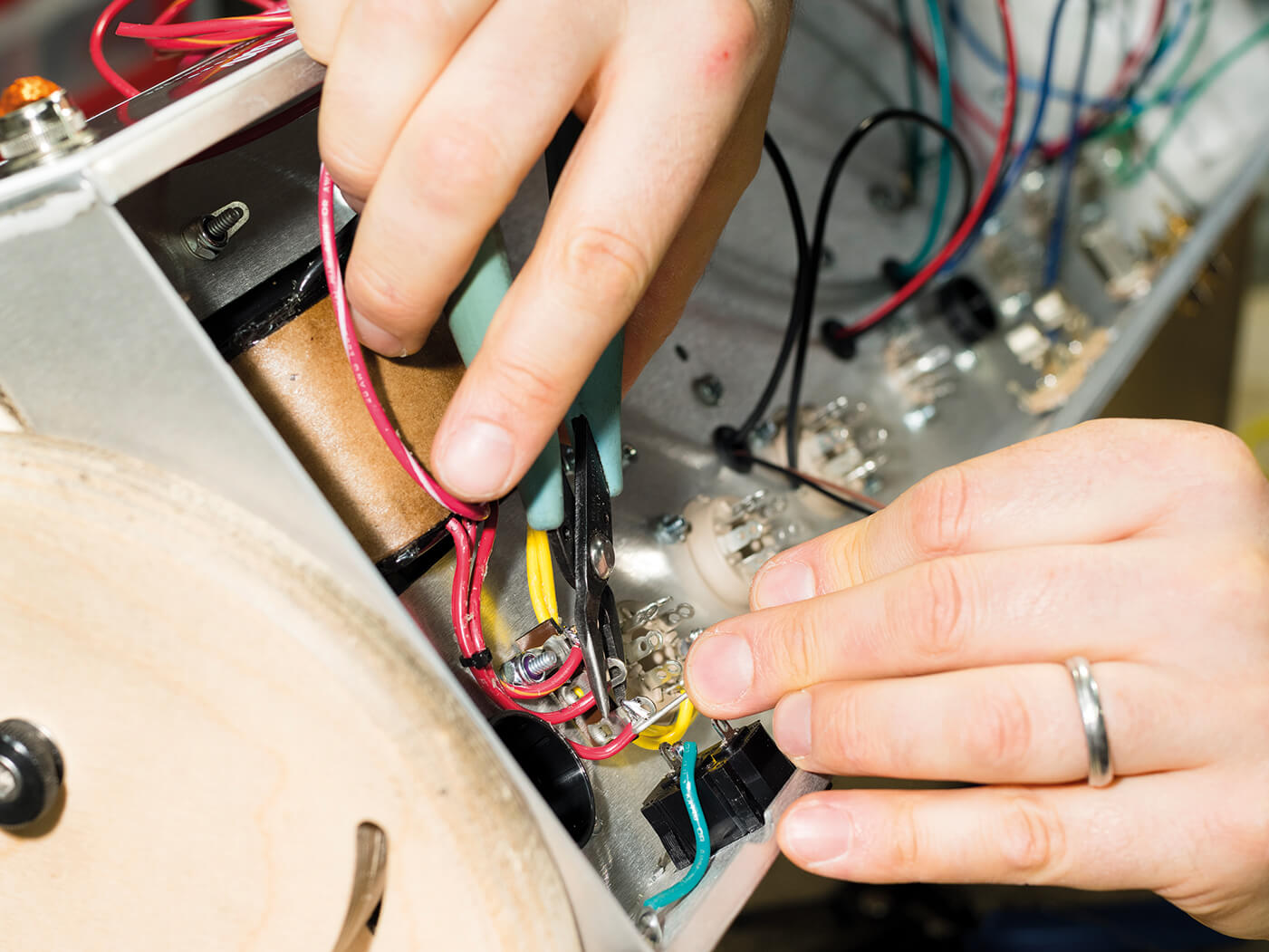
In addition, there’s an analogue tremolo circuit. The LFO (low-frequency oscillation) of the tremolo can also be altered via an internal DIP switch. It’s easy to see how these cumulative features have made the unit Marcus’s most successful creation to date. By offering such a well-considered range of selling points, The Amp provides players of all levels an entry into compact pedalboard-mounted amplification, or alternatively a high-quality sonic platform for home or studio production.
We caught up with Marcus to find out more about his tone philosophy and working methods…
Before we dive into the details of Milkman Sound, could you tell us more about your music-making?
“I play in a number of bands in the Bay Area, but I spend the most time playing with Kelly McFarling And The Home Team. We’ve been playing music together for about six years now.”
How would you describe the type of music you play?
“Kelly’s music is hard to define, but it definitely falls under the umbrella of Americana. When I first joined her band, the sound was more folk, but we’ve evolved a lot since then. I tend to gravitate towards bands and music that pushes the limits of genre – pedal-steel is a great instrument for country music, but it really shines when you take it into different contexts.”
How long have you played pedal-steel?
“I started playing it in 2005, when I was living in New York City. It’s hard to believe that I’ve been playing for 13 years! The steel guitar is an instrument where time is an essential investment. It’s very hard to pick up pedal-steel and be a natural. It takes years of work to get the nuance and intonation of the instrument to work in your favour.”
How important a consideration is the pedal-steel when designing your amps?
“The first amplifier I designed was specifically intended for pedal-steel guitar, but I’ve broadened my horizons a bit since then. I usually test every amplifier with my pedal-steel to make sure the bandwidth and overall headroom is there, but not all of my amps are pedal-steel-friendly anymore.
“That said, the steel guitar is pretty handy for amplifier design, because it has an enormous bandwidth and has a very hot pickup, which demands a lot of headroom. Dynamic range and headroom are very important to guitar players as well, so if a design sounds great with pedal-steel, I know it’s going to be a unique and wonderful experience for six-string guitar players.”
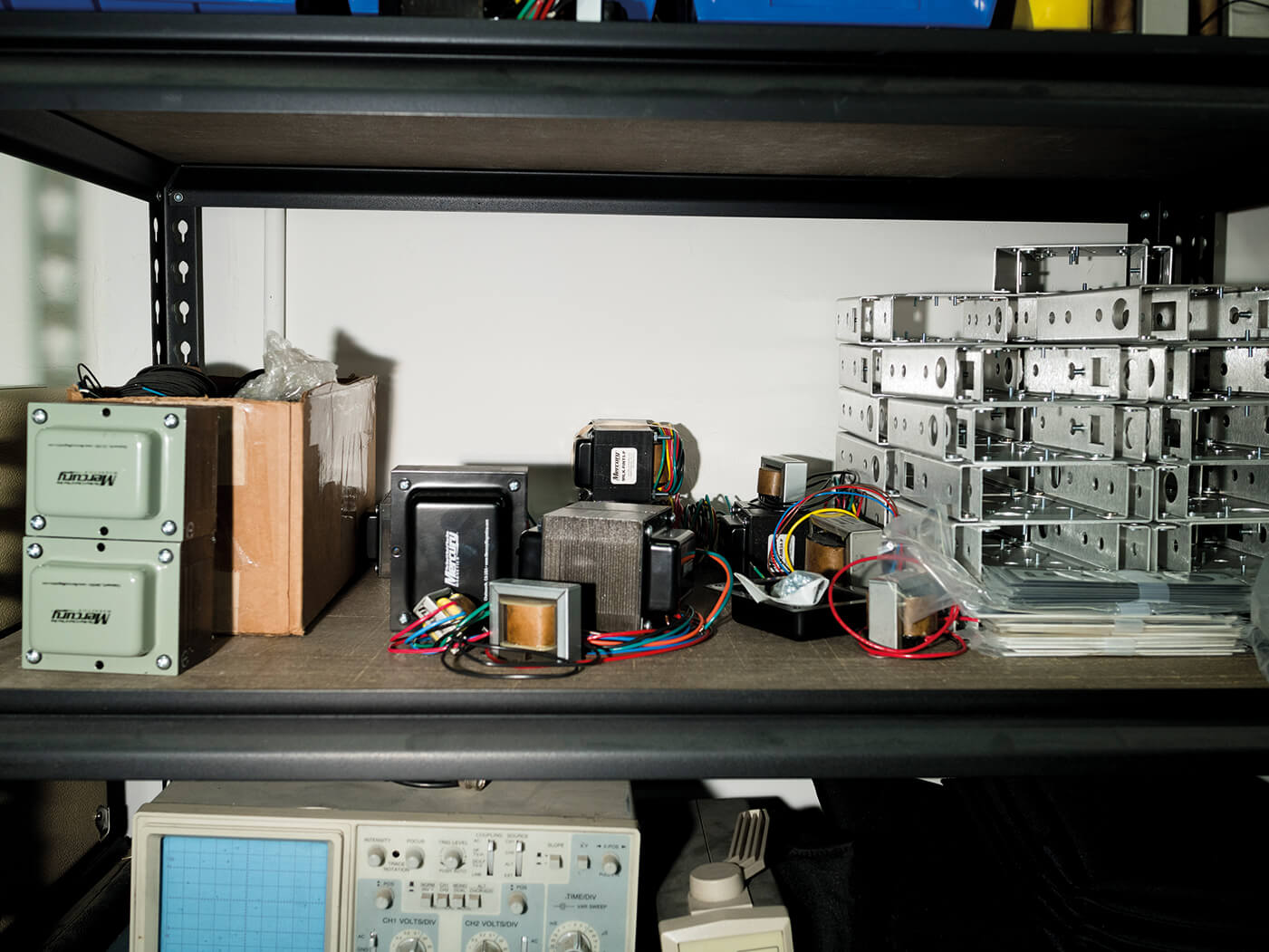
What was the amp you were working on while we were shooting?
“I was working on a pair of 50-watt Sideman amplifiers. This was originally designed as a two-channel amp for steel-guitar players who did double duty on guitar or another electric instrument, but eventually evolved into a single-channel guitar amplifier. It sits in a unique power range in my model line-up – 50 watts has the big transformer sound, but also functions well at low volume.”
You mentioned the quality of the components you use; how important are these to the overall sound of the amps you produce?
“I like to equate building amplifiers to making pastry. It’s all about technique and the quality of ingredients used. If you get them both right and do not make any sacrifices, you will get the best version of your creation that you can get. I have custom aluminium chassis made for me and I like to use solid pine for the cabinets. Those two elements can take a design to another level, because of how they respond to electron flow, grounding, and vibration.”
How long have you been in your present location?
“I moved my shop in to its current location about three years ago. I started in a really small room there that was being used as a supply closet. Then I got a medium-sized room that I outgrew in about eight months! Now I’m in the largest room that they have, but it’s still a bit tight. Before my current shop I was working out of my apartment, which was a lovely experience, but did present some challenges when it came to making noise.”
Are there any significant challenges to being located where you are in San Francisco – the industrial nature of the area and social issues?
“Honestly, I love being in San Francisco and I do not look at the current social situation in the city as a handicap to having a small business. There are groups like SFMade and others that are there looking out and lobbying for the little guy. The city has changed a lot since I have been there, but San Francisco is always in a state of change. If I’m there long enough, I’ll probably see it change into something else – hopefully something better, where there are less people suffering from the technology boom.
“There can be some frustrations when it comes to finding a space to manufacture, or finding employees that can handle the ebb and flow of small-scale manufacturing – but I don’t think that’s unique to San Francisco. I think that is happening all over the United States. It’s always been hard for the little guy to stay in business in this country; there’s no support structure.”
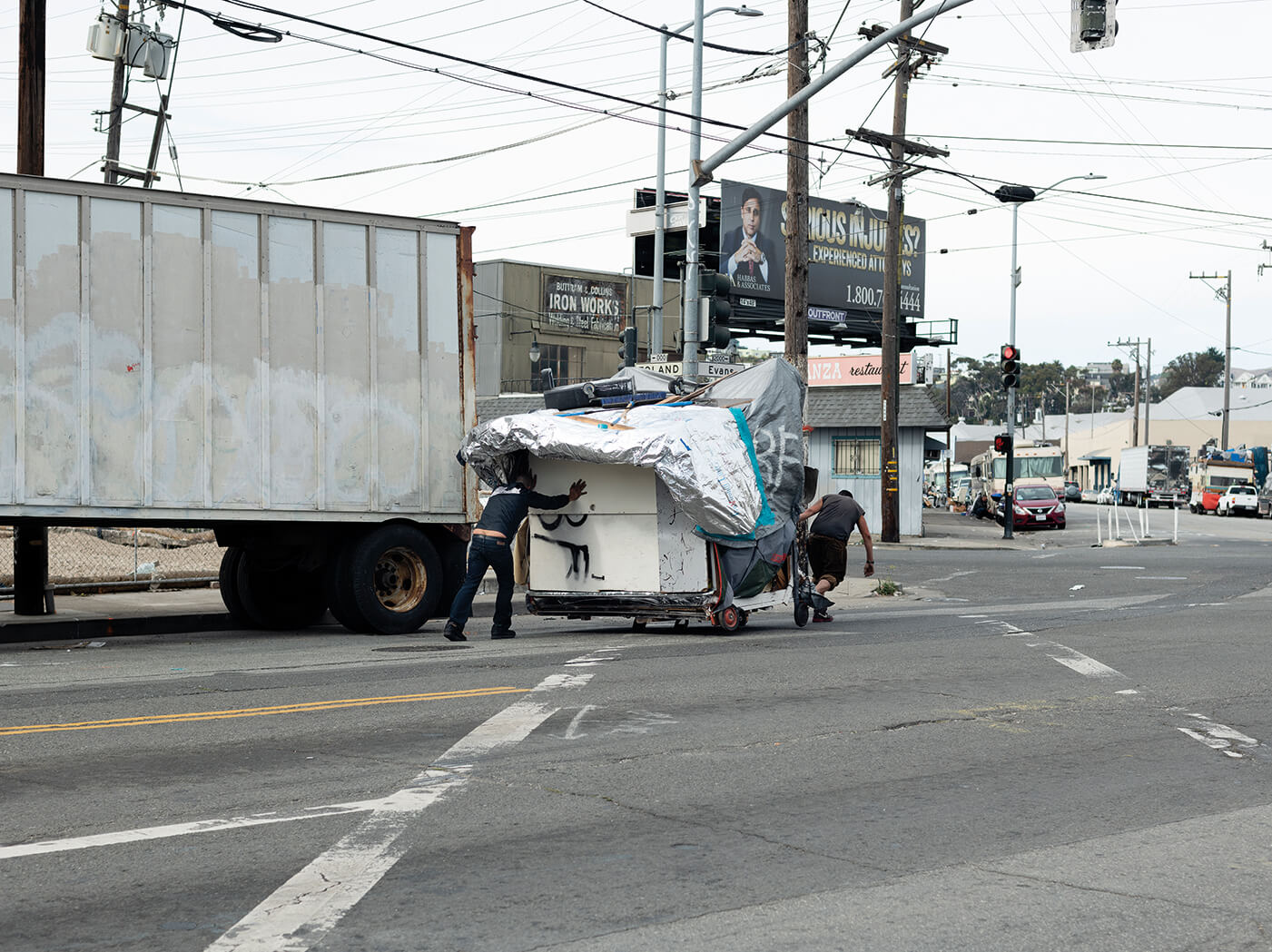
Could you tell us more about the studio?
“I currently rent a shop space in Light Rail Studios, which is a fully functioning analogue recording studio. They have a massive amount of equipment down in the control room, including a Trident – a range console with loads of history, including use on a few Queen records and Bowie records. There are also piles of gear used by the Dead: a tape machine, a few organs, and some other odds and ends. It’s nice to be surrounded by so much history. They have a lot of old and funky amplifiers in the live room, too, and I often leave my prototypes down there for them to use on records.”
How did you hook up with Robert Keeley for the design of the reverb and tremolo in The Amp? Do you envision any other collaboration with him in the future, or indeed other pedal manufacturers?
“Robert Keeley and I were initially put in touch by Josh Scott from JHS pedals. He talked Robert into using a Creamer in his NAMM booth, and Robert was immediately smitten with the overall Milkman vibe. I ended up building him one of my 40-watt Mini 12-inch combos, which he keeps at his house. When it came time to develop The Amp, Robert kind of forced my hand a little, in a good way. He would not allow me to use a digital reverb program that was not up to his personal standard.
“About a week before the NAMM show in 2018, he overnighted a package with his reverb program and I have to admit, he made The Amp what it is today. His reverb program sounds amazing and it responds like a real reverb tank. It’s very impressive. I’m sure we’ll work together more in the future – he and his team are extremely talented.”
You say prefer to work alone – can you expand on why that’s preferable for you?
“I like to work alone, because I find that I’m much more productive that way. I am not antisocial or anything like that. It’s actually kind of the opposite: when there is someone working near me, I become Mr Chatterbox and nothing gets done. I also like to lose myself in the work. It’s a zen thing, just like when I’m playing music or driving long distance. When I’m building amplifiers I’m able to tap into the flow state and melt away into a different consciousness. That’s the state of creativity and it’s where ideas find their way into my path. It’s a nice place to be.”
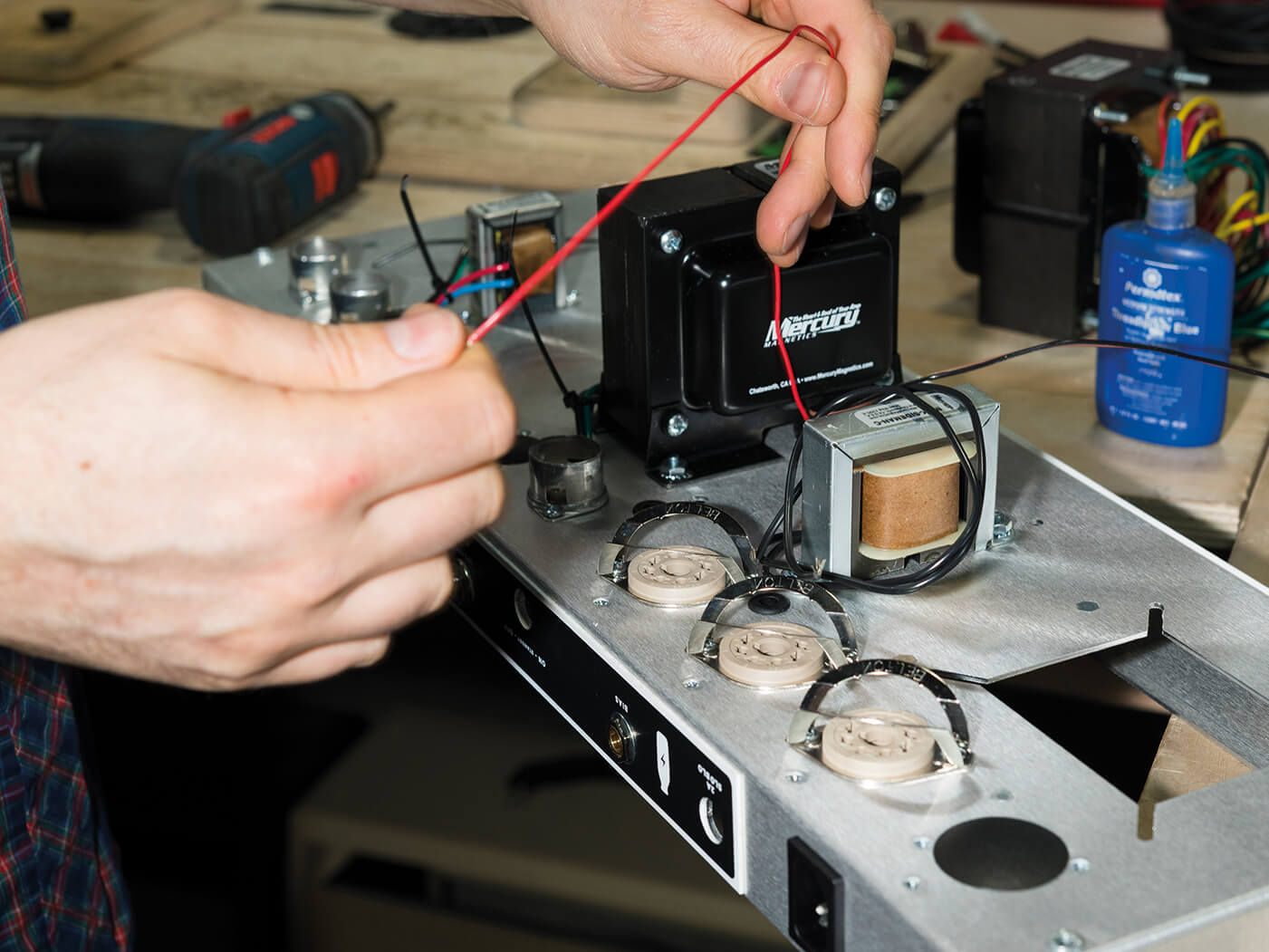
Have you thought about relocating your business out of San Francisco, given the cost of living?
“I have thought about it, but it really pains me to think that the next stage of my life will take place elsewhere. I truly love San Francisco. The overall vibe here suits me and the weather is perfect, too. I live in California, but I can’t deal with heat. Where else am I going to live that’s 65º all year long, for the most part? The creative soul and culture of San Francisco is still lurking beneath all this tech stuff. There’s an amazing music and food scene and pretty much everywhere you want to go is walking distance. It’s a magical never-never land and I don’t want to grow up!”
How have you seen San Francisco change?
“The biggest change since I’ve been here is the increase of tech workers living in the city. Where I grew up in Connecticut, everyone lived in a suburb and worked in the city. Here, it’s the complete opposite – but it only recently became that way.
“When I first moved here, I lived in one part of the city and worked in another, and it was a piece of cake to get between the two. Now the traffic on both the city streets and freeways is totally choked out from commuters leaving the city for work out in the suburbs. It’s extremely inefficient and the infrastructure of the city has not been upgraded to handle it. Getting materials around the city has become a chore and also getting customers to come to my shop during my regular hours has become nearly impossible.
“If I have a customer coming from the East Bay, forget it, man – there is no good time of the day to have them come by.”

You seem determined to eschew celebrity endorsements; can you explain why?
“Shortly after I first started Milkman Sound, I participated in an event with Bob Taylor from Taylor Guitars. He mentioned they never did endorsements or had artists featured in their ads. I think their first ad back in the day was just a tree, or something like that. I really respected the idea that the product and craftsmanship would speak for itself.
“There are many artists and ‘people of note’ using Milkman amplifiers, but I am a fan of discretion. When someone famous orders from me, I do not share it on social media or anything like that. My Instagram feed is probably 99.9 per cent musician-free – it’s just the amplifiers, the materials I use and the occasional picture of me futzing around on pedal-steel.
“It’s amazing how far this approach has taken Milkman. When I first committed to it, I thought it would be a huge mistake, but it has turned out to be really great. Thanks Bob! Great advice.”
Is there anything you can reveal in terms of new products that you’re developing?
“I cannot reveal too much about Milkman projects, but I can say that I am really going to be digging into The Amp as its own product line in 2019. We have a few variations and spin-off products planned for NAMM. There are some secret hand-wired amp projects in the works as well, but they won’t surface until later in the year.”
Find out more about Milkman Sound at milkmansound.com.
